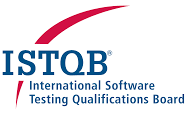How to write Test Cases A step-by-step guide
How to write Test Cases A step-by-step guide
Writing test cases is a crucial step in software development to ensure that the application functions as expected and meets the specified requirements. We can initiate the writing of our test cases once the SRD is prepared; it is not essential to have the application built beforehand to commence this process. Below are the step-by-step guide to writing test cases:
Understand Requirements:
Review the requirements document or user stories to understand the expected behavior of the software.
Identify Test Scenarios:
Break down the requirements into testable scenarios. A scenario represents a specific functionality or feature of the application.
Define Test Inputs:
Identify the input data required to execute each test scenario. This includes valid inputs, invalid inputs, boundary conditions, and any other relevant data.
Write Test Steps:
Define the steps needed to execute each test scenario. Be clear and concise, detailing the actions to be performed and the expected outcomes.
Determine Expected Results:
Specify the expected results or outcomes for each test scenario. This helps in verifying whether the application behaves as intended.
Include Preconditions and Postconditions:
Document any preconditions that must be met before executing the test case, as well as any postconditions that should be true after the test case is executed. However, this aspect can be integrated depending on the specific format you are utilizing for writing the test case.
Review and Validate:
Review the test cases to ensure they are comprehensive, accurate, and cover all relevant scenarios. Validate them against the requirements to confirm alignment.
Organize Test Cases:
Organize the test cases logically, such as grouping them by feature, module, or priority, to facilitate test execution and management.
Document Test Case Details:
Provide detailed information about each test case, including its ID, description, test steps, expected results, and any additional notes or dependencies.
Review with Stakeholders:
Collaborate with stakeholders, including developers, product managers, and QA team members, to review and refine the written test cases for clarity and accuracy.
Maintain Traceability:
Ensure that each test case is traceable back to its corresponding requirement or user story. This helps in tracking test coverage and ensuring all requirements are tested.
Update Test Cases as Needed:
Update by writing test cases whenever there are changes to the requirements or the application itself. Keep them relevant and up-to-date throughout the software development lifecycle.










